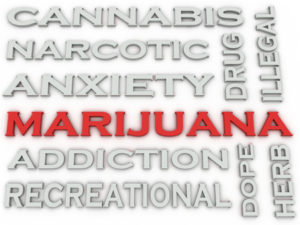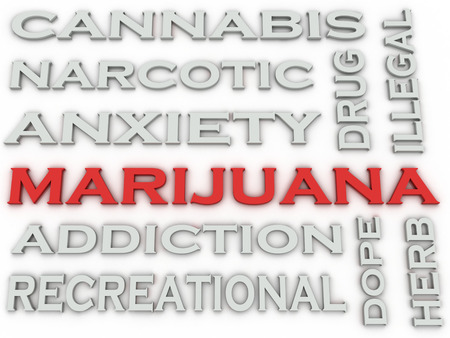
In the 2016 election there was another political milestone met besides the presidential election of Donald Trump—four more states voted to legalize recreational marijuana. California, Maine, Massachusetts, and Nevada joined Alaska, Colorado, Oregon, Washington and the District of Columbia. However, the public use of marijuana—recreational or medical—is still not permitted anywhere. Arkansas, Florida and North Dakota approved medical marijuana initiatives and Montana loosened restrictions on an existing medical marijuana law. The executive director of the Drug Policy Alliance was quoted in The Washington Post as saying: “The end of marijuana prohibition nationally, and even internationally, is fast approaching.”
Given the election of Donald Trump and the international position on marijuana, this may be more optimism than reality. Within the U.S. there has been clear momentum towards legalization of some kind, as there are now eight states and the District of Columbia where recreational marijuana is legal; and 28 states and the District of Columbia where medical marijuana is permitted. However, because of the ongoing federal classification of marijuana as a Schedule I drug, reliable research into the benefits and adverse health effects from marijuana use is hard to come by. The public needs to be more aware of the scientific research into the potential adverse effects and medical benefits from marijuana as the U.S. continues to move toward a complicated, patchwork quilt of varied state laws and regulations regarding marijuana.
A good place to start is with an article written by the current director of the National Institute on Drug Abuse (NIDA), Dr. Nora Volkow and three others, “Adverse Health Effects of Marijuana Use.” Volkow et al. reviewed the current state of the scientific findings on the adverse health effects related to the recreational use of marijuana. Their review focused on the areas where the evidence was the strongest. In a table summarizing their confidence in the evidence for adverse effects of marijuana on health and wellbeing, they gave the following assessment of marijuana use, particularly with heavy or long-term use that starts in adolescence.
|
Effect |
Overall Level of Confidence |
|
Addiction to marijuana or other substances |
High |
|
Diminished lifetime achievement |
High |
|
Motor vehicle accidents |
High |
|
Symptoms of chronic bronchitis |
High |
|
Abnormal brain development |
Medium |
|
Progressive use of other drugs |
Medium |
|
Schizophrenia |
Medium |
|
Depression or anxiety |
Medium |
|
Lung cancer |
Low |
Long-term marijuana use can lead to addiction; there’s no real doubt. About 9% of those who experiment with marijuana will develop dependence, according to the criteria for dependence in the DSM-IV. This increases to one in six (16.7%) among those who started using marijuana as teens. Daily smokers have a 25% to 50% risk of developing an addiction to marijuana. There is also a cannabis withdrawal syndrome, with symptoms such as: irritability, sleep difficulties, dysphoria (a state of being unhappy or unwell), cravings, and anxiety.
Since the brain remains in a state of active development until around the age of 21, individuals under 21 who use marijuana are more vulnerable to adverse long-term effects from marijuana use. Adults who smoked marijuana regularly during adolescence have impaired neural connectivity (fewer fibers) in certain brain regions.
The impairments in brain connectivity associated with exposure to marijuana in adolescence are consistent with … findings indicating that the cannabinoid system plays a prominent role in synapse formation during brain development.
While regular use of marijuana is associated with anxiety and depression, causality has not been established. Marijuana is also regularly linked to psychosis, especially among people with a predisposition. Heavy marijuana use, greater drug potency, and exposure at a young age can all negatively effect the experience of psychosis or schizophrenia, accelerating the time of a first psychotic episode by 2 to 6 years.
Because marijuana use impairs critical cognitive functions during acute intoxication and for days after use, many students may be functioning below their natural capabilities for long periods of time. “The evidence suggests that such use results in measurable and long-lasting cognitive impairments, particularly among those who started to use marijuana in early adolescence.” A failure to learn at school, even for short or sporadic periods of time because of acute intoxication, will interfere with the capacity to achieve educational goals. This seems to explain the association between marijuana use and poor grades.
Heavy marijuana use has been linked to lower income, greater need for socioeconomic assistance, unemployment’s, criminal behavior, and lower satisfaction with life.
There is also a relationship between THC levels in blood and performance in controlled driving-simulation studies. These studies have been a good predictor of real-world driving ability. “Recent marijuana smoking and blood THC levels of 2 to 5 mg per milliliter are associated with substantial driving impairment.” The overall risk of involvement in an accident increases by a factor of 2 when someone drives soon after using marijuana. Not surprisingly, combining marijuana and alcohol seems to result in greater risks than the use of either drug alone.
The authors noted that most of the long-term effects of marijuana use in the article have been seen among heavy or long-term users. Yet the presence of multiple confounding factors, including the frequent use of marijuana with other drugs, detracts from their ability to establish causality.
They also noted there is a need to improve our knowledge on the potential medical benefits of the marijuana plant. A report by the Institute of Medicine sees the benefits for stimulating appetite and in combating chemotherapy-induced nausea and vomiting, severe pain and decreasing intraocular pressure in the treatment of glaucoma. “Nevertheless, the report stresses the importance of focusing research efforts on the therapeutic potential of synthetic or pharmaceutically pure cannabinoids.” With all of its problems, the existing structure for the approval of new medicines through the FDA is better than the current lack of any safety and regulatory apparatus with medical marijuana. The ongoing failure to confirm or refute the plethora of health and medicinal claims with marijuana use is progressively taking us back to the days of patent medicine claims in state-by-state approval. In conclusion they summarized the results of their review of the literature on adverse effect from marijuana use as follows:
Marijuana, like other drugs of abuse, can result in addiction. During intoxication, marijuana can interfere with cognitive functions (e.g. memory and perception of time) and motor function (e.g. coordination), and these effects can have detrimental consequences (e.g. motor-vehicle accidents). Repeated marijuana use during adolescence may result in long-lasting changes in brain function that can jeopardize educational, professional, and social achievements. . . . . As policy shifts toward legalization of marijuana, it is reasonable and probably prudent to hypothesize that its use will increase and that, by extension, so will the number of persons for whom there will be negative health consequences.
A German review study by Hoch et al., “Risk Associated with the Non-Medical Use of Cannabis,” also sought to summarize the current state of knowledge regarding the physical and mental adverse effects of intensive recreational cannabis use. They came to conclusions similar to the Volkow et al. study. Hoch et al. noted the potential for addiction and withdrawal, mild negative effects on learning capacity, neurocognitive impairments with adolescents, an increased risk of psychosis, and others. “Further research is required to clarify the causal nature of the links between cannabis consumption patterns and adverse events.”
Empirical data have now clearly shown that starting early in life and regularly using high amounts of cannabis for a long period of time increases the risk of various mental and physical disorders and endangers age-appropriate development. Because many studies have failed to control properly for confounding variables, it still cannot be stated beyond doubt that there is a causal connection between cannabis consumption patterns and cognitive damage or the development of comorbid psychic or somatic disorders. The worldwide increase in the THC content of cannabis may increase the health risks, particularly for adolescent users. Further research is required to determine why some people are more affected than others by the unfavorable consequences.
On the other hand, another long-term study of chronic marijuana use among young adult men by Bechtold et al., was published in the journal, Psychology of Addictive Behavior. The study used data from The Pittsburgh Youth Study, a longitudinal study that followed seventh grade students until they were 36. The study found that chronic marijuana users were no more likely than other groups to experience several physical or mental health problems, including early onset psychosis and heart problems. Some limitations in applying the findings of this study would include the fact that participants were only followed until the age of 36, perhaps too early for many of the health problems to become evident. Another difference was that the heaviest use category for marijuana was “more than 3 times per week,” while Volkow et al. seems to have been looking at daily or almost daily use.
In a postscript addition to the above studies, a 2016 study by Columbia researchers found evidence of a compromised dopamine system in heavy marijuana users. Dopamine levels were lower in the striatum, an area in the brain involved in working memory, impulsive behavior and attention. Previous studies have found addiction to other drugs of abuse, like cocaine and heroin, have similar effects on dopamine release. This was the first such evidence for marijuana.
A press release by the Columbia University Medical Center quoted the lead author as stating that in light of the increasing use and acceptance of marijuana, especially by young people, it is important to look more closely at the potentially addictive effects of cannabis on key regions of the brain. The study was small, with 11 adults who were severely dependent upon marijuana and 12 matched healthy controls. The average age of onset among the marijuana users was 16, with dependence occurring by 20. In the month before the study, all users in the study had smoked daily.
“Compared with controls, the cannabis users had significantly lower dopamine release in the striatum, including subregions involved in associative and sensorimotor learning.” The investigators also explored the relationship between dopamine release in the striatum and cognitive performance on learning and working memory tasks. The bottom line was that long-term, heavy marijuana use could impair the dopaminergic system, which in turn could have a series of negative effects on learning and behavior.
I talked with someone who had been to California a few weeks after the 2016 election when recreational marijuana use was legalized. She reported how employees of her hotel were gathering outside on their break to smoke pot, similar to what cigarette smokers do. If legal recreational use becomes more widespread in the U.S., the adverse physical and mental adverse effects from heavy, regular use will also become more evident. Then marijuana use will take a place beside alcohol use and tobacco use as a public health problem.





